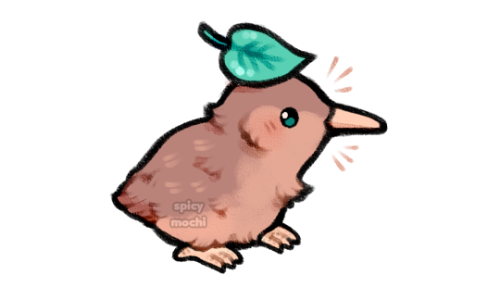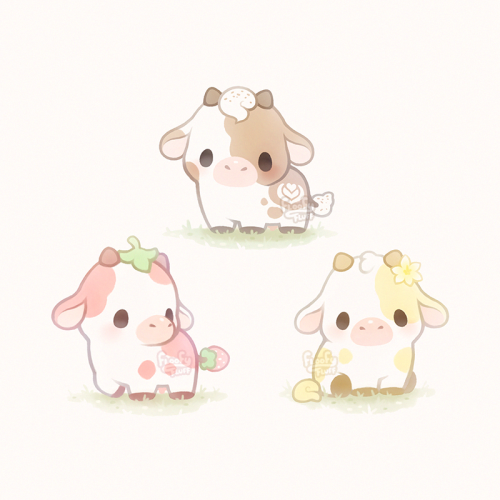This Is The Pleiades in Culmination! ✨✨✨

This is the Pleiades in culmination! ✨✨✨
Just a few weeks ago, this cluster culminated in the south - meaning that they reached their highest point and appeared its brightest. Thankfully, the telescopes were open briefly for me to take a quick picture! ♥♥♥
Taken by me (Michelle Park) using the Slooh Chile One telescope on November 23rd, 2020 at 2:37 UTC.
More Posts from Mystarypi and Others


the pixel art //// the sticker follow me on twitter / instagram / patreon / shop / leave a tip

mola walk

mini kiwi





@melisscan

2022 May 15
Colors of the Moon Image Credit & Copyright: Marcella Giulia Pace
Explanation: What color is the Moon? It depends on the night. Outside of the Earth’s atmosphere, the dark Moon, which shines by reflected sunlight, appears a magnificently brown-tinged gray. Viewed from inside the Earth’s atmosphere, though, the moon can appear quite different. The featured image highlights a collection of apparent colors of the full moon documented by one astrophotographer over 10 years from different locations across Italy. A red or yellow colored moon usually indicates a moon seen near the horizon. There, some of the blue light has been scattered away by a long path through the Earth’s atmosphere, sometimes laden with fine dust. A blue-colored moon is more rare and can indicate a moon seen through an atmosphere carrying larger dust particles. What created the purple moon is unclear – it may be a combination of several effects. The last image captures the total lunar eclipse of 2018 July – where the moon, in Earth’s shadow, appeared a faint red – due to light refracted through air around the Earth. Today there is not only another full moon but a total lunar eclipse visible to observers in North and South America – an occurrence that may lead to some unexpected lunar colorings.
∞ Source: apod.nasa.gov/apod/ap220515.html

This is Altair! ✨✨✨
As a part of the Summer Triangle asterism, this is the brightest star in the constellation Aquila. With a mass of almost 2 times the Sun and a rotational speed of 240 km/s, this star is actually more of an oval shape as it flattens out! 🌃🌃🌃
Taken by me (Michelle Park) using the Slooh Canary Two telescope on June 24th, 2021 at 00:46 UTC.

This is the Triangulum Galaxy! 🌌🌌🌌
Despite being a spiral galaxy, the Triangulum Galaxy has very little star formation as shown through infrared observations from the Wide-field Infrared Survey Explorer (WISE). However, a region known as NGC 604 is the largest stellar nursery between itself, the Milky Way, and the Andromeda Galaxy! 🔥🔥🔥
Taken by me (Michelle Park) using the Slooh Chile One telescope on March 8th, 2022 at 20:17 UTC.

This is the Skull Nebula! 💀💀💀
The glow of this eerie nebula is perfect for Halloween! This planetary nebula has a binary star system with a third star orbiting it. The beautiful colors of this nebula come from the outer layers of a Sun-like star that died in an explosion! 👻👻👻
Taken by me (Michelle Park) using the Slooh Canary Three telescope on October 28th, 2021 at 1:57 UTC.

Moocha, Srawberry, Vanilla 🐮







lets remember all the information y’all
-
 saturn-princessa reblogged this · 3 years ago
saturn-princessa reblogged this · 3 years ago -
 spaceimagery reblogged this · 3 years ago
spaceimagery reblogged this · 3 years ago -
 kattkitnoob-blog liked this · 4 years ago
kattkitnoob-blog liked this · 4 years ago -
 bashirs reblogged this · 4 years ago
bashirs reblogged this · 4 years ago -
 bashirs liked this · 4 years ago
bashirs liked this · 4 years ago -
 generalturkeymakerfestival-blog liked this · 4 years ago
generalturkeymakerfestival-blog liked this · 4 years ago -
 etherealherisis reblogged this · 4 years ago
etherealherisis reblogged this · 4 years ago -
 etherealherisis liked this · 4 years ago
etherealherisis liked this · 4 years ago -
 stefanopreto liked this · 4 years ago
stefanopreto liked this · 4 years ago -
 orchidreign liked this · 4 years ago
orchidreign liked this · 4 years ago -
 detailstodiefor reblogged this · 4 years ago
detailstodiefor reblogged this · 4 years ago -
 5nisan2001 liked this · 4 years ago
5nisan2001 liked this · 4 years ago -
 pastelletic liked this · 4 years ago
pastelletic liked this · 4 years ago -
 warrior-1971-blog liked this · 4 years ago
warrior-1971-blog liked this · 4 years ago -
 rory-32 liked this · 4 years ago
rory-32 liked this · 4 years ago -
 reiki-master-lia-blog liked this · 4 years ago
reiki-master-lia-blog liked this · 4 years ago -
 nekromonaeditsiguess liked this · 4 years ago
nekromonaeditsiguess liked this · 4 years ago -
 leonerg reblogged this · 4 years ago
leonerg reblogged this · 4 years ago -
 leonerg liked this · 4 years ago
leonerg liked this · 4 years ago -
 cloudynightsandrainydays liked this · 4 years ago
cloudynightsandrainydays liked this · 4 years ago -
 plebastronomy liked this · 4 years ago
plebastronomy liked this · 4 years ago -
 farmingfairy liked this · 4 years ago
farmingfairy liked this · 4 years ago -
 spacetimewithstuartgary reblogged this · 4 years ago
spacetimewithstuartgary reblogged this · 4 years ago -
 spacetimewithstuartgary liked this · 4 years ago
spacetimewithstuartgary liked this · 4 years ago -
 mailingstarman liked this · 4 years ago
mailingstarman liked this · 4 years ago -
 elekronialazure liked this · 4 years ago
elekronialazure liked this · 4 years ago -
 bohemotash liked this · 4 years ago
bohemotash liked this · 4 years ago -
 suki-thesapphicfairy liked this · 4 years ago
suki-thesapphicfairy liked this · 4 years ago -
 getas-regina reblogged this · 4 years ago
getas-regina reblogged this · 4 years ago -
 spellberds liked this · 4 years ago
spellberds liked this · 4 years ago -
 purple-rosa liked this · 4 years ago
purple-rosa liked this · 4 years ago -
 insightsyouneveraskedfor liked this · 4 years ago
insightsyouneveraskedfor liked this · 4 years ago -
 bydas reblogged this · 4 years ago
bydas reblogged this · 4 years ago -
 jmmjk22 liked this · 4 years ago
jmmjk22 liked this · 4 years ago -
 kyle-stranger liked this · 4 years ago
kyle-stranger liked this · 4 years ago -
 emerencia liked this · 4 years ago
emerencia liked this · 4 years ago -
 various-aestheticss reblogged this · 4 years ago
various-aestheticss reblogged this · 4 years ago -
 various-aestheticss liked this · 4 years ago
various-aestheticss liked this · 4 years ago -
 aleso liked this · 4 years ago
aleso liked this · 4 years ago -
 quoththeraven-nevermind2 liked this · 4 years ago
quoththeraven-nevermind2 liked this · 4 years ago -
 breakdown-n liked this · 4 years ago
breakdown-n liked this · 4 years ago -
 nenesstansunthings liked this · 4 years ago
nenesstansunthings liked this · 4 years ago -
 littlepersephonee liked this · 4 years ago
littlepersephonee liked this · 4 years ago
